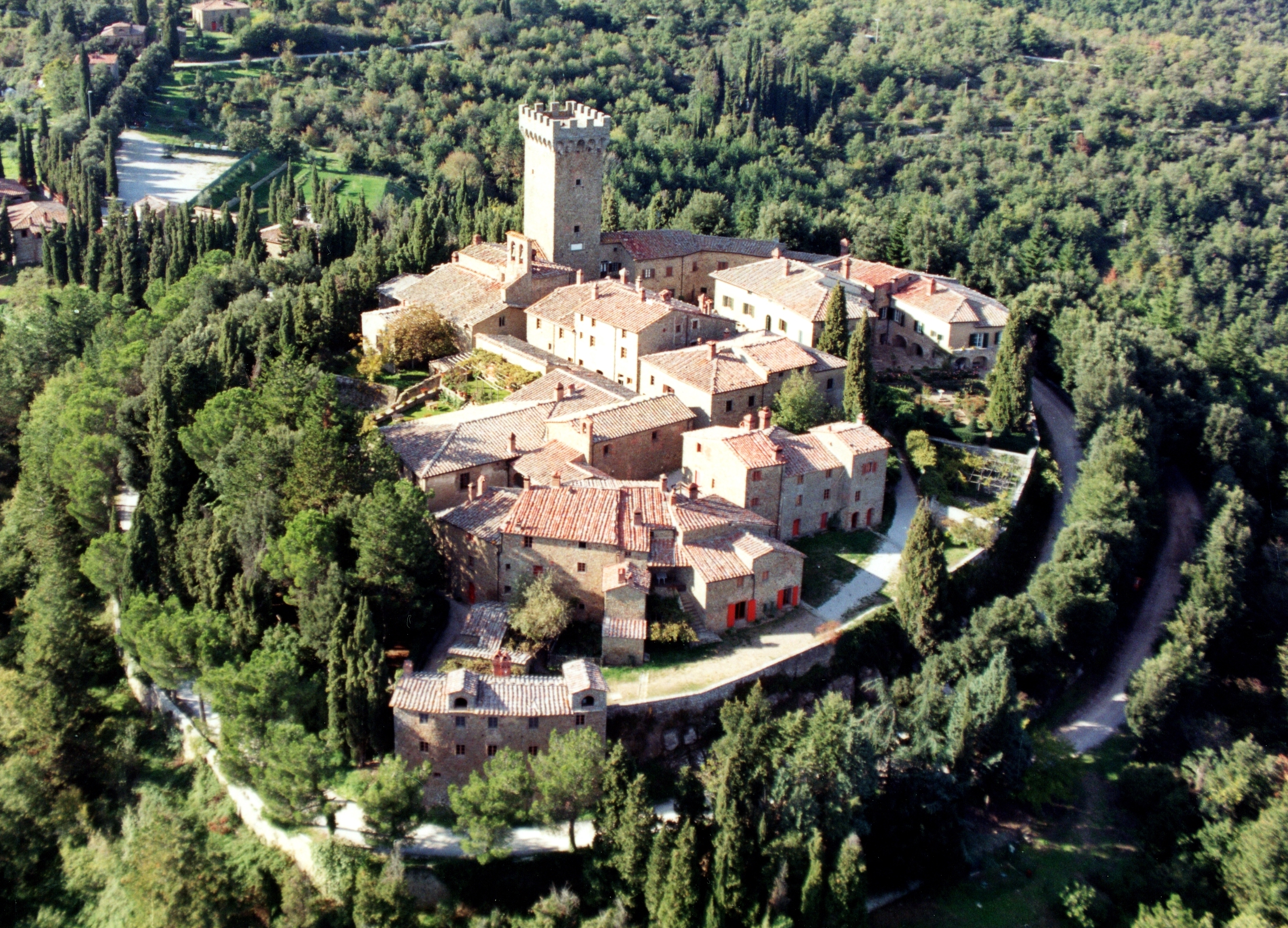
Nearly 80 private, historic properties across Tuscany will be participating in the ADSI initiative (Italian Historic Houses Association) on Sunday May 21, a yearly event devoted to the celebration of architectural and botanical heritage throughout Italy. Visitors – Italian and foreign alike – will be invited to wander through the gardens, courtyards and buildings of historic residences, usually hidden from view. Admission is free but reservations are often required. Descriptions of a select number of residences, open on May 21, can be found below; the list is not exhaustive and further details about other sites, as well as cultural events hosted at a few of the villas for a small fee, can be found by following the link at the bottom.
Gargonza Castle
Gargonza (near Monte San Savino), Arezzo
10 am – 1 pm, 2.30 – 5.30 pm
Overlooking the Val di Chiana, in the municipality of Monte San Savino, lies the small, walled village of Castello di Gorganza. Its agricultural beginnings, turbulent past, including attacks, occupations and re-occupations, and visit by Dante in 1302, make this a site of particular historical interest. On May 21, visitors will be invited to enjoy its rich heritage and step back in time as they wander the narrow alleyways and take in its architectural treasures, including the 13th century Romanesque church and bell tower.
Villa La Ferriera
Strada Pescia Fiorentina Chiarone 9 bis, Capalbio, Grosseto
10 am – 1 pm, 2.30 – 5.30 pm
Located in the province of Grosseto, Villa La Ferriera was created in 1967. A large variety of plants can be found here, reflecting the diverse botanical tastes of the garden’s designer, Guippi Pietromarchi, whose extensive travels have shaped and refined her eye for green spaces. Peter Tomkins, an American officer who had served as a secret agent in Rome during the German occupation, found himself a guest at the property in the 1970s. Tomkins shared his fascinating theory about the complex sensitivities of plants, insistently encouraging the owners to play classical music to their garden and lodge cassettes in and amongst the greenery. Tomkins later went on to publish the renowned bestseller, The Secret Life of Plants. The garden’s history alone is therefore reason enough to visit; but as is its many species of exotic plants, from the Solanum of Peru to the Parkinsonia of Yemen.
Villa La Cartiera
Via Borgo Vecchio, 8, Pontremoli (Massa Carrara)
10.30 am – 1 pm, 2.30 – 5.30 pm
Built as a manor house in the mid-1800s, and bought in 1888 by the current owner’s ancestors, the villa has been well-maintained and embellished over the years. The park surrounding the villa is also well-kept, with its large, leafy trees offering cool spaces for rest and contemplation. This includes a large Pecan, from North America; a centuries-old Yew; and a towering Cedar, from Lebanon. Along the path leading up to the higher-level garden, two Ginko Bilobas have been planted more recently; these trees turn a vibrant yellow in the autumn.
Villa Amalia
Corso Indipendenza 1 – Borgo a Buggiano, Pistoia
10 am – 1 pm, 2.30 – 6 pm
The Villa Amalia’s construction dates back to the 18th century, and later renovations were undertaken in the 19th century by the Franchini family, who sought it out as their permanent residence. Its exterior is elegantly designed: with a pleasing symmetry, decorative ashlars in stone and plaster, and acanthus leaf motifs, the overall impression is strikingly Neo-Classical. Reed beds, bamboo and monumental trees are prominent features of the garden, located in front of the villa.
Castello di Celsa
Strada Provinciale 101 di Montemaggio, Sovicille, Siena
10 am – 1 pm, 3 – 6 pm
Looking out towards Siena and the Arbia Plain, the Castello di Celsa was built in the 12th century. Originally uninspiring and maudlin, the complex underwent a facelift in the 16th century, when the architect Baldassare Peruzzi was drafted in. Peruzzi’s renovations include the terrace wall, Italian garden (most likely) and the circular chapel, all of which will be viewable on May 21. Developments to the garden continued after WWII: the flowerbeds were redesigned and the lemon trees re-planted in their original 18th-century vases. Approaching the castle from the east, visitors will pass through an avenue of sculpted cypresses leading to a vast enclosed park and a large, ornamental fish pond, the iconography of which represents the river Ganges, Nile, Danube and Mar del Plata (on the Argentinian coast). (sophie holloway)
For further information about the sites, guided tours and cultural events, visit:
https://www.associazionedimorestoricheitaliane.it/eventi-dimore/347698/?tab=toscana#dtab-marche








